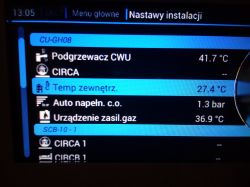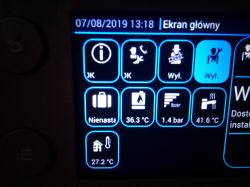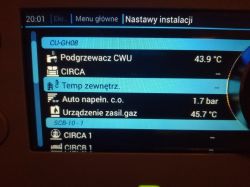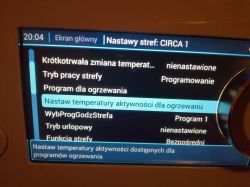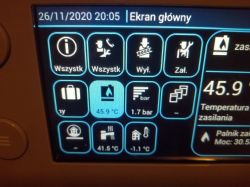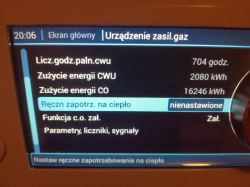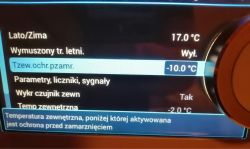Hello,
I have a beautiful new Dietrich AMC25 furnace installed.
I have a question about setting up the furnace for the winter. The installer mentioned the economical use of the heating curve, but this is not present in the settings with the current configuration, but from the beginning.
1) An external temperature sensor is installed.
The last settings icon on the stove determines heating below 15°C in winter
My question is how to set the room temperature range to which the stove should heat? Is it regulated by radiator thermostats in each room?
2) I read the instructions and got started zone setting - CIRCA - is it necessary? because
I set:
- manual operation mode (interchangeable programming - if I wanted to specify a different temperature during the day)
- room temperature 21°C
- regulation strategy on the regulation based on T external (selectable automatic, T internal, T external and T internal and external)
- I did not change the heating curve, but the slope is set to 1.5 - radiator slope. and 50°C - value in the middle
(I don`t know what the maximum temperature should be set on the stove - now it is 80 or 85°C)
After confirmation, the tile shows that: "frost protection" mode and 6°C have been set
what am I doing wrong ?
The installer claims that the external sensor determines the temperature in the room according to: heating curve and suggests turning off the "CIRCA" Zone
but in this situation there are no heating curve settings on the stove
I have a beautiful new Dietrich AMC25 furnace installed.
I have a question about setting up the furnace for the winter. The installer mentioned the economical use of the heating curve, but this is not present in the settings with the current configuration, but from the beginning.
1) An external temperature sensor is installed.
The last settings icon on the stove determines heating below 15°C in winter
My question is how to set the room temperature range to which the stove should heat? Is it regulated by radiator thermostats in each room?
2) I read the instructions and got started zone setting - CIRCA - is it necessary? because
I set:
- manual operation mode (interchangeable programming - if I wanted to specify a different temperature during the day)
- room temperature 21°C
- regulation strategy on the regulation based on T external (selectable automatic, T internal, T external and T internal and external)
- I did not change the heating curve, but the slope is set to 1.5 - radiator slope. and 50°C - value in the middle
(I don`t know what the maximum temperature should be set on the stove - now it is 80 or 85°C)
After confirmation, the tile shows that: "frost protection" mode and 6°C have been set
what am I doing wrong ?
The installer claims that the external sensor determines the temperature in the room according to: heating curve and suggests turning off the "CIRCA" Zone
but in this situation there are no heating curve settings on the stove



